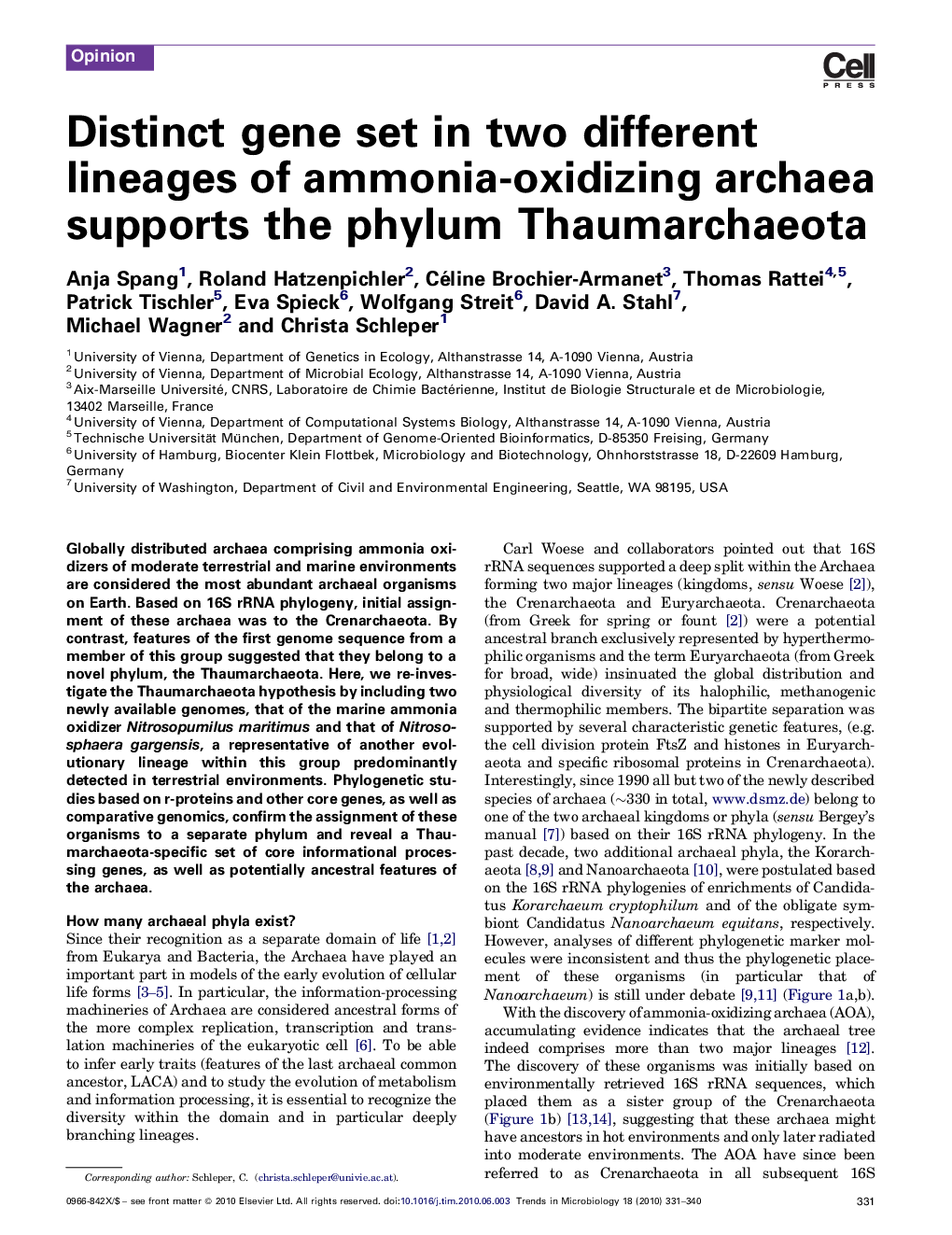| Article ID | Journal | Published Year | Pages | File Type |
|---|---|---|---|---|
| 3422399 | Trends in Microbiology | 2010 | 10 Pages |
Globally distributed archaea comprising ammonia oxidizers of moderate terrestrial and marine environments are considered the most abundant archaeal organisms on Earth. Based on 16S rRNA phylogeny, initial assignment of these archaea was to the Crenarchaeota. By contrast, features of the first genome sequence from a member of this group suggested that they belong to a novel phylum, the Thaumarchaeota. Here, we re-investigate the Thaumarchaeota hypothesis by including two newly available genomes, that of the marine ammonia oxidizer Nitrosopumilus maritimus and that of Nitrososphaera gargensis, a representative of another evolutionary lineage within this group predominantly detected in terrestrial environments. Phylogenetic studies based on r-proteins and other core genes, as well as comparative genomics, confirm the assignment of these organisms to a separate phylum and reveal a Thaumarchaeota-specific set of core informational processing genes, as well as potentially ancestral features of the archaea.
